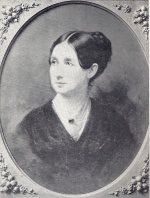Difference between revisions of "Portal:Featured Article Of The Week"
M-Explorer (talk | contribs) |
M-Explorer (talk | contribs) |
||
| Line 1: | Line 1: | ||
{{FAformat | {{FAformat | ||
| − | |Title= | + | |Title= Dorothea Lynde Dix |
| − | |Image= | + | |Image= dorotheadix.jpg |
|Width= 150px | |Width= 150px | ||
| − | |Body= | + | |Body= All important crises in historical movements are associated with the lives and conduct of marked individuals; persons who have advanced some original or discriminating conception as to duty or public policy, and who, through enthusiasm, strength of purpose and the force of personality, have initiated and conducted to a successful issue a notable departure in government, moral and religious convictions, social habits, or institutional methods. |
| − | In | + | The history of insanity, in conformity with this universal law, has its conspicuous pioneers, its epoch-making masters, its heros and heroines. In this connection many American specialists are entitled to more or less prominence. But from the standpoint of personal labors to promote practical reforms in public provision for the insane, the work of Dorothea L. Dix stands pre-eminent. |
| + | |||
| + | Her surroundings in childhood were humble and she had a hard struggle to obtain an education, followed by a toilsome period spent in school-teaching. But in spite of these difficulties in her early life and of the semi-invalidism which, later on, hampered her physical activity, she achieved a national and even international reputation as a practical philanthropist, her remarkable personal influence over public officials and governmental policies contributing greatly to her success. In the 40 years of her public work she was instrumental in founding or enlarging more than 30 state institutions for the proper custody and right treatment of the insane, becoming an acknowledged power in this respect not only throughout the United States, but in European countries as well. It is impossible to estimate how many men and women, suffering from mental disease, she extricated or preserved for public jails and private pens, or how many others enjoyed release or exemption from galling chains and other cruel devices for restraint as a result of her humanitarian efforts. [[Dorothea Lynde Dix|Click here for more...]] | ||
}} | }} | ||
Revision as of 04:25, 25 March 2013
Featured Article Of The Week
Dorothea Lynde Dix
All important crises in historical movements are associated with the lives and conduct of marked individuals; persons who have advanced some original or discriminating conception as to duty or public policy, and who, through enthusiasm, strength of purpose and the force of personality, have initiated and conducted to a successful issue a notable departure in government, moral and religious convictions, social habits, or institutional methods.
The history of insanity, in conformity with this universal law, has its conspicuous pioneers, its epoch-making masters, its heros and heroines. In this connection many American specialists are entitled to more or less prominence. But from the standpoint of personal labors to promote practical reforms in public provision for the insane, the work of Dorothea L. Dix stands pre-eminent.
Her surroundings in childhood were humble and she had a hard struggle to obtain an education, followed by a toilsome period spent in school-teaching. But in spite of these difficulties in her early life and of the semi-invalidism which, later on, hampered her physical activity, she achieved a national and even international reputation as a practical philanthropist, her remarkable personal influence over public officials and governmental policies contributing greatly to her success. In the 40 years of her public work she was instrumental in founding or enlarging more than 30 state institutions for the proper custody and right treatment of the insane, becoming an acknowledged power in this respect not only throughout the United States, but in European countries as well. It is impossible to estimate how many men and women, suffering from mental disease, she extricated or preserved for public jails and private pens, or how many others enjoyed release or exemption from galling chains and other cruel devices for restraint as a result of her humanitarian efforts. Click here for more...
